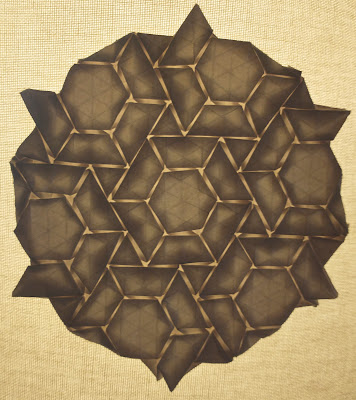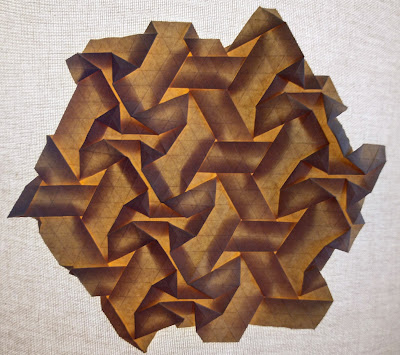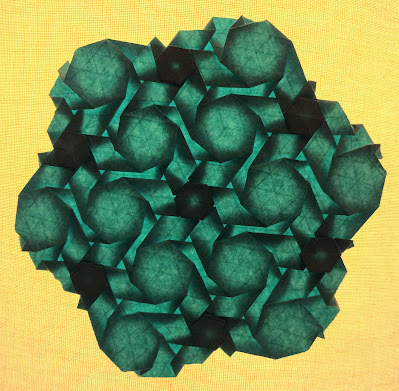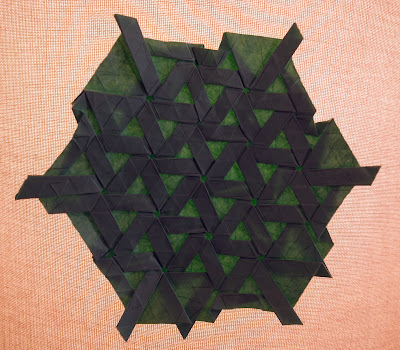Funneling Outward Origami Flagstone Tessellation

The tessellation that I folded prior to this one is what gave me the idea for this. I just kind of flipped things around and worked out how it would all fit together. It took a lot triangles to construct. A. Lot. Of. Triangles. Flagstone tessellations are generally very triangle intensive. This design is no exception. The layout feels very familiar, but I searched and searched to see if I'd done it before based on someone else's idea and I couldn't find anything. It's open back hexagons surrounded by trapezoids. That central idea repeats. There are some top-side triangles in order to make it a flat fold. It's not the best time of year for folding flagstone tessellations. It's hot and humid. But inspiration is impatient. There are many triangles required on the reverse side. I knew there would be triangles needed on the back side, but I didn't anticipate needing quite so many of them during my initial conception of it. But no worries, they were not shy








